Last week, TNC Washington, the Stillaguamish Tribe and the Tulalip Tribes hosted Dr. Richard Spinrad, Undersecretary of Commerce for Oceans and Atmosphere and NOAA Administrator, for a tour of TNC’s Port Susan Bay Preserve and the Stillaguamish Tribe’s zis a ba II site. Over 40 people gathered to walk the land together and share how federal investments from the Bipartisan Infrastructure Law (BIL) are supporting salmon recovery and climate resilience in the Stillaguamish watershed.
TNC Aquatic & Estuarine Ecologist, Dr. Emily Howe starts off the day talking about the importance of estuary habitat for salmon recovery and her personal connection to Port Susan Bay. © Hannah Letinich/TNC
The tour was also an opportunity to welcome important leaders to the site, including Stillaguamish Tribal Councilmember Kadi Bizyayeva, Stillaguamish Tribal Councilmember Gary Tatro, Tulalip Tribal Councilmember Marlin Fryberg Jr., Congressman Rick Larsen, Snohomish County Executive Dave Somers, Everett Mayor Cassie Franklin, and congressional staff from both the U.S. House and Senate.
We stood side by side with our key partners on the project—the Stillaguamish Tribe, the Tulalip Tribes and the WA Dept of Fish and Wildlife—to talk about the benefits of estuary restoration at Port Susan Bay and zis a ba II, and the impact it will have for people and Puget Sound Chinook salmon recovery.
Congressman Rick Larsen, NOAA Administrator Rick Spinrad, Kadi Bizyayeva, Stillaguamish Tribal Councilmember and Fisheries Director, and Tulalip Tribal Councilmember Marlin Fryberg Jr. gather to celebrate the Bipartisan Infrastructure Law and the importance of restoring landscapes as infrastructure. © Hannah Letinich/TNC
Thanks to the investment from the BIL and other state and federal funding sources, TNC will soon be completing habitat restoration on 150 acres at our Port Susan Bay Preserve. Directly adjacent to our project is the Stillaguamish Tribe’s zis a ba II project, which will restore ~240 acres of estuary habitat. These two projects will work together to create nearly 400 acres of continuous tidal marsh at the mouth of the Stillaguamish River.
Lack of estuary habitat is a key limiting factor for recovery of Puget Sound Chinook salmon. These projects will significantly increase habitat, improve the ecological function of the estuary, and make it easier for salmon to adapt to the impacts of climate change. Restoration at Port Susan Bay will create deep, interconnected channels for juvenile salmon to forage and grow in cool and calm estuary, before migrating to the open waters of Puget Sound. It also plays a critical role in human resilience to climate change by protecting nearby communities from storm surges and reducing flood risk.

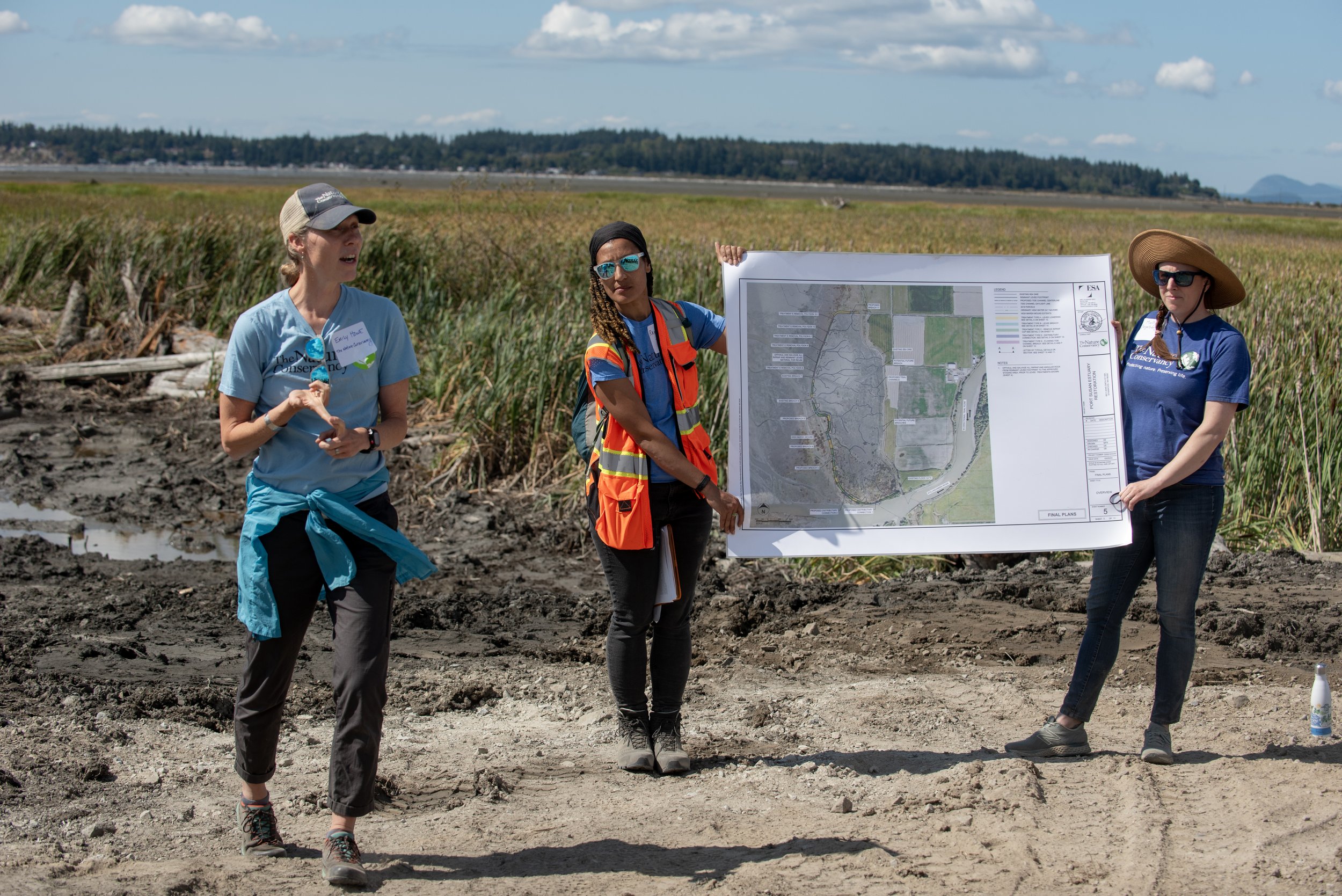
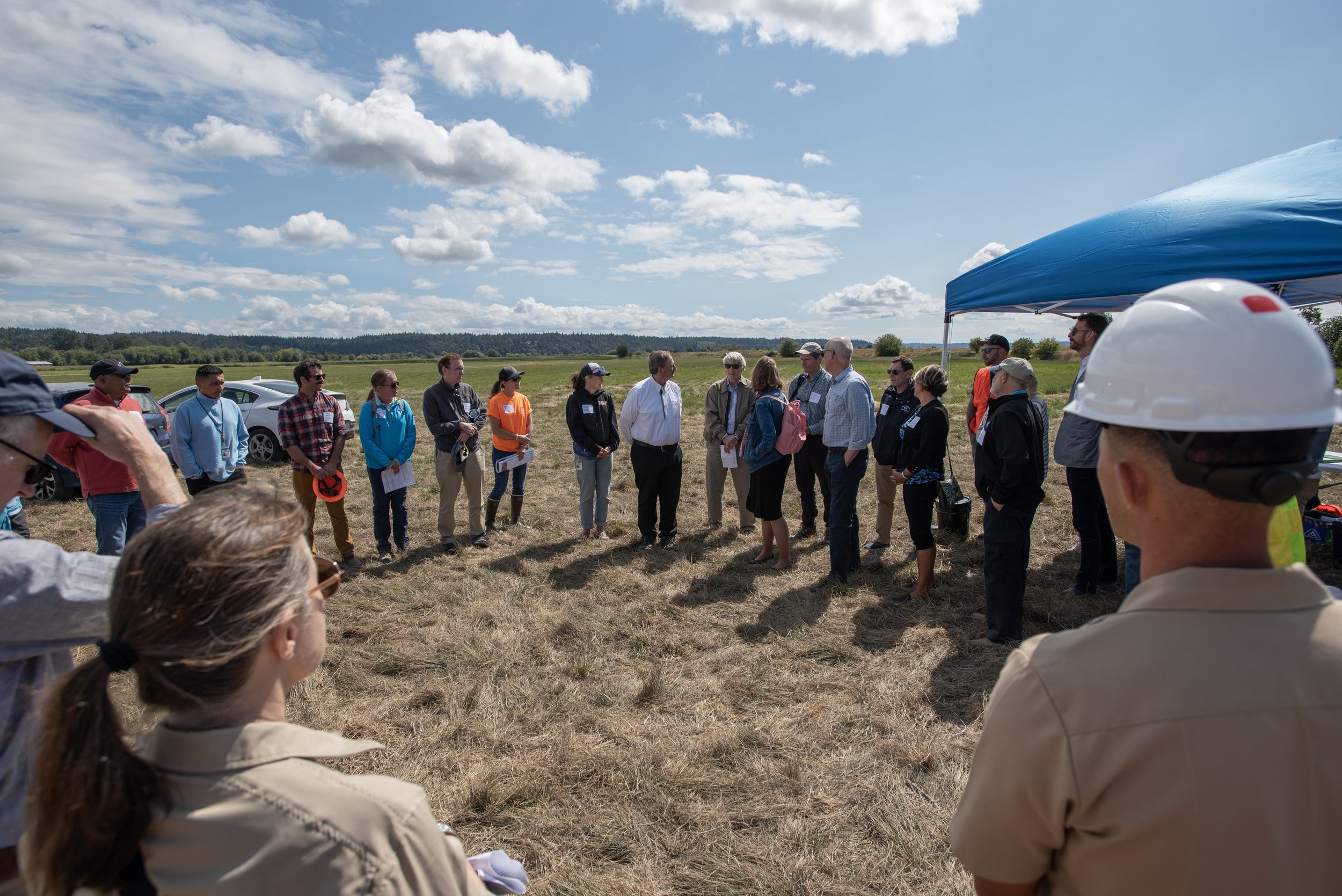
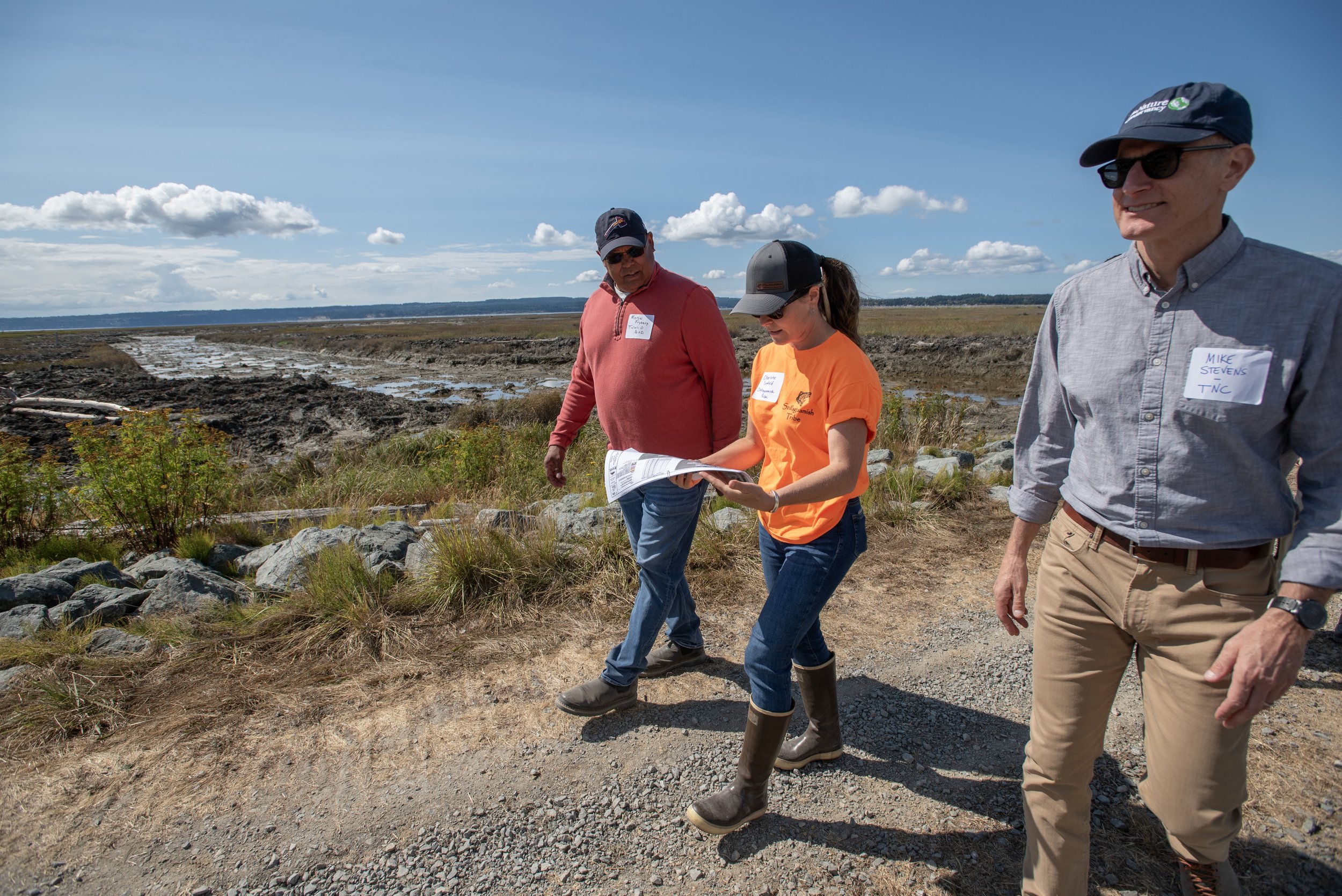
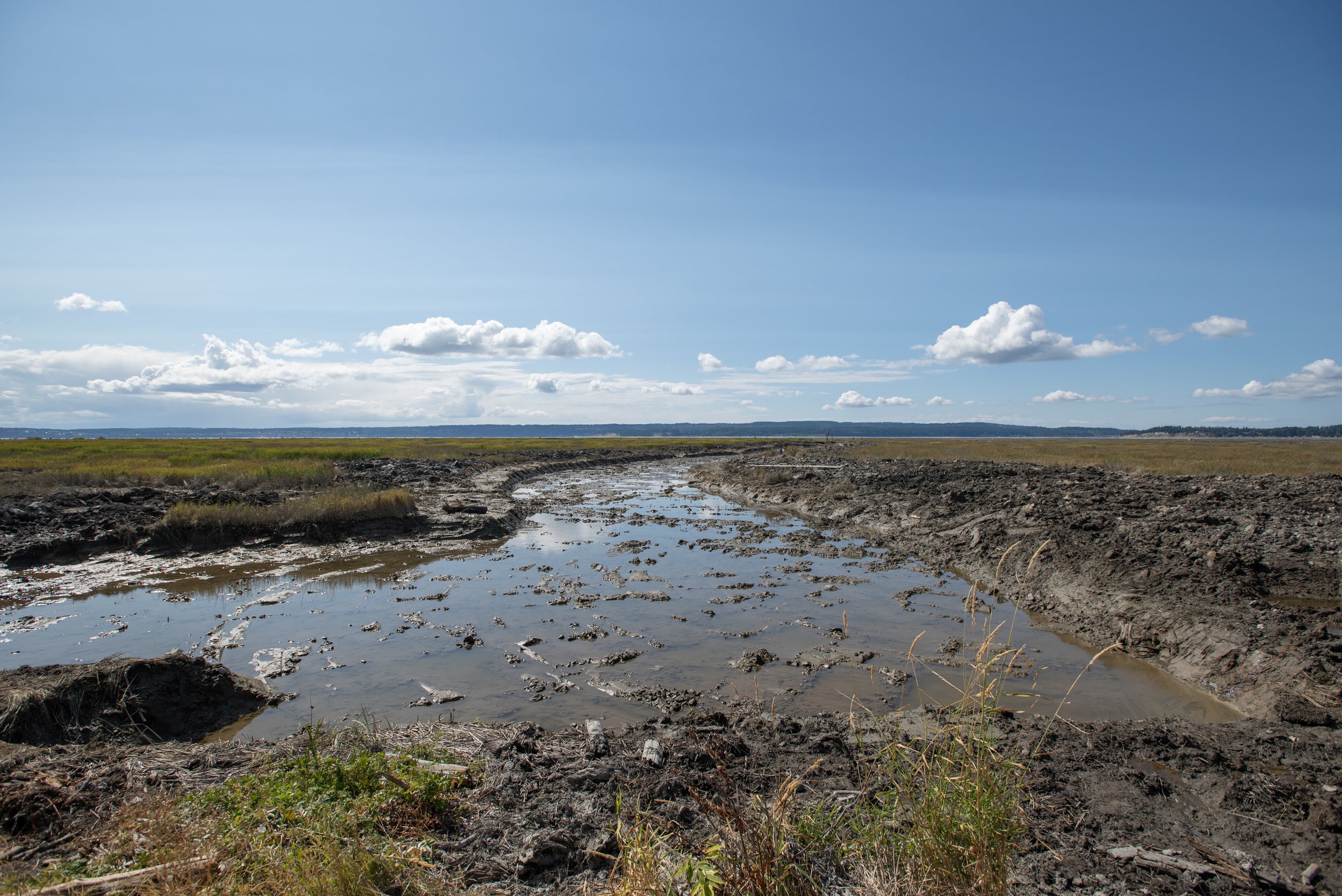
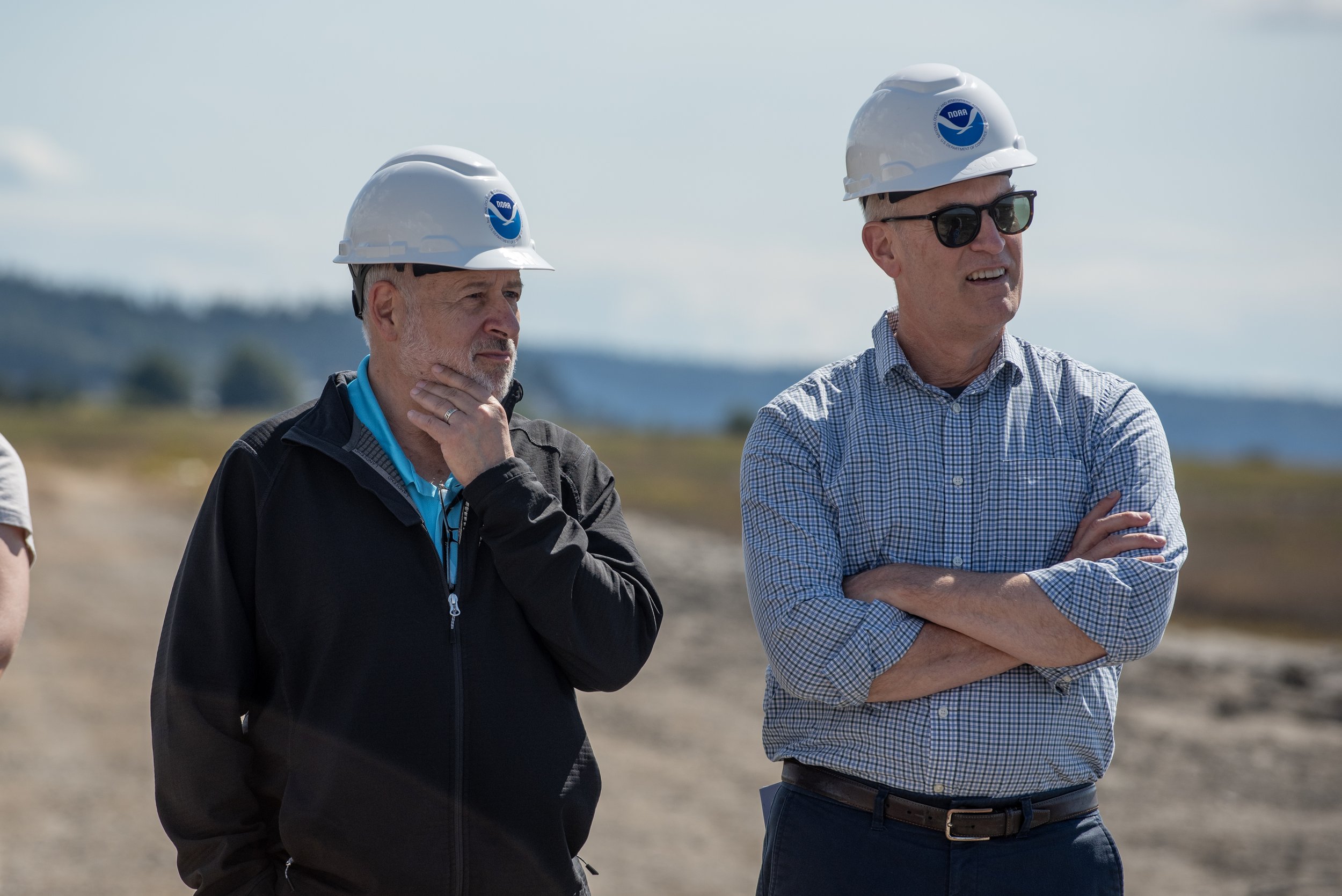

TNC Aquatic & Estuarine Ecologist, Dr. Emily Howe explained, “This project is coming just in time. We are coming off a period of good, cold ocean conditions where Chinook and other salmon have been doing well. But we’re about to enter an El Nino cycle that will be very difficult for salmon survival. This project comes just in time that will provide key habitat for the progeny of the large number of Chinook that we expect to return this year.”
NOAA Administrator Rick Spinrad said, “As President Biden's Investing in America agenda enables us to restore nature and protect our coastal communities from climate threats, we're reminded that some of the most effective climate action starts locally. This project is a testament to the multiplier effect of sound partnerships like the ones that NOAA has been able to forge with nonprofit, local, state, Tribal, and Congressional leaders. Our collective work will safeguard these crucial ecosystems of Puget Sound and the critical species they support."
Congressman Larsen highlights the importance of infrastructure investments locally. © Hannah Letinich/TNC
Congressman Rick Larsen highlighted the numerous projects in North Puget Sound that are receiving NOAA funding through the Bipartisan Infrastructure Law (BIL). He emphasized how the scale of these investments is making a difference for the region and is helping to bring back salmon and orca whales. He applauded this project as being “the very definition of natural infrastructure” and praised the partnerships that make these projects possible.
Kadi Bizyayeva speaks about the importance of Chinook salmon returning to the Stillaguamish. © Hannah Letinich/TNC
Kadi Bizyayeva, Stillaguamish Tribal Councilmember and Fisheries Director, spoke about the importance of habitat restoration to the Tribe. The Tribe has been unable to fish for Chinook salmon in the Stillaguamish River for the last two decades. She talked about how the Tribe has five ceremonial fishers who go out every year to harvest a single ceremonial Chinook salmon. Councilmember Bizyayeva said, “When we plan and manage our resources, we think ahead seven generations. It’s only been 168 years since we signed the Treaty of Point Elliot. When we put things in perspective, there's a lot of work that has been done and there's a lot of work that still needs to be done to rebalance the watershed. This project will be fundamental. We couldn’t do it without all the hard work and collaboration from the partners here today.”
We gratefully acknowledge all the agencies that have funded the Port Susan Bay Phase II restoration project: National Fish and Wildlife Foundation, National Oceanic and Atmospheric Administration (NOAA), U.S. Fish and Wildlife Service, Washington Department of Ecology, Washington Department of Fish and Wildlife, and the Washington Recreation and Conservation Office.
























